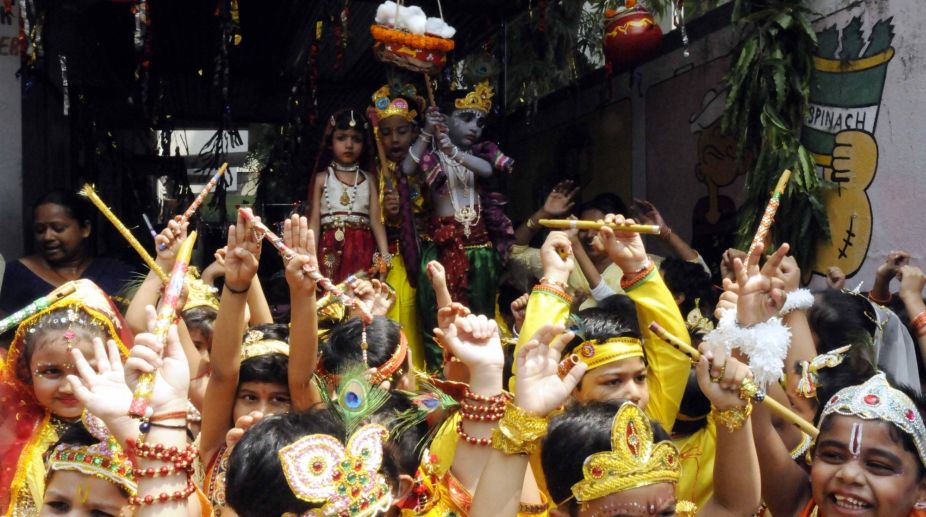Come Tuesday and Janmashtami celebrations will grip the country as the devouts will make a beeline for Krishna temples and sway to the ‘bhajans’. Youngsters will form human pyramids to break hanging earthen pots filled with ‘dahi’ (curd) and kids dressed as young Lord Krishna will be the stars of several tableaux in residential neighbourhoods.
As people gear up to partake of Lord Krishna’s birthday celebrations, The Statesman takes a look at the history and the recent controversies surrounding ‘Dahi Handi’, which is an inseparable part of the Janmashtami celebrations.
What is Dahi Handi?
Dahi Handi is celebrated every year in August/September, usually on the second day of Janmashtami. Young men and boys form teams to make human pyramids and break the earthen pots filled with ‘dahi’ (curd) or other milk-based delicacies at difficult to reach height.
The winning team gets prize money and commercial sponsorships as well. A participant is called a Govinda and the festival is mostly popular in Maharashtra and its nearby regions.
With nearly 1,000 mandals and Govinda brigades, Mumbai is one of the biggest centres for ‘Dahi Handi’ celebrations on Janmashtami.
History of the festival
The event finds its origin in the legend of Lord Krishna stealing butter as a baby by breaking earthen pots hung from the ceiling and out of his reach by his mother.
Controversy surrounding it
Over the years, there have instances of children sustaining injuries while partaking in the revelry, prompting some NGOs to approach the court and bar kids from participating.
In August 2014, the Bombay High Court directed the government to ensure that the height of human pyramids was restricted to 20 feet, and the minimum age of ‘Govindas’ was 18.
The state government moved the Supreme Court, but in August 2016 the apex court upheld the High Court order.
However, in 2016, several organisations had protested the restrictions, some even violated the conditions.
Latest judgment
The Bombay High Court on 7 August declined to restrict the height of Dahi Handis but ordered that children below 14 years would not be permitted to take part as ‘Govindas’.











